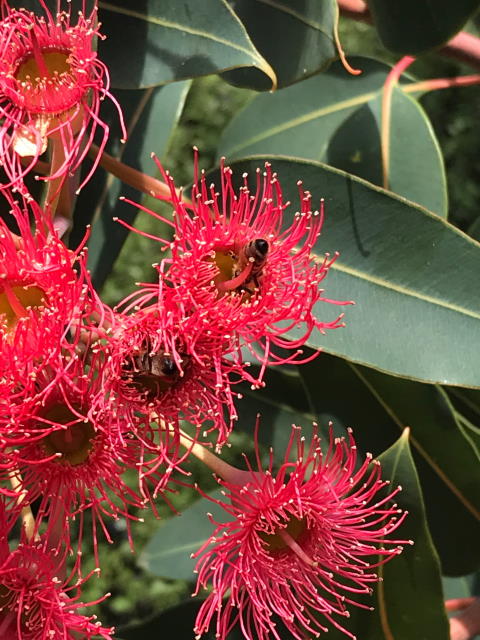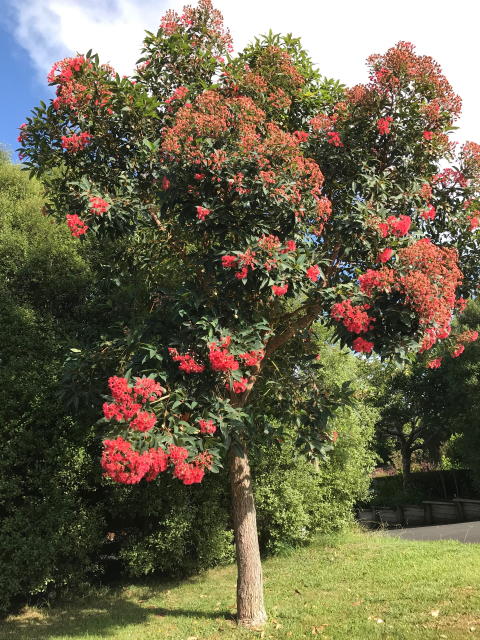Red flowering gum (Corymbia ficifolia)


The most widely cultivated of all eucalypt species, this is an ideal street tree; hardy and fast-growing but does not grow large enough to require pruning. When mature it reaches about 35 feet, and in summer its flowers, in shades of pink, red or orange, are humming with bees. The one shown here is on the roadside in Maungakawa Village, whilst the largest specimen in the world, with an enormously wide trunk, grows in Princes Street, Hamilton.
The species is endemic to that world-famous biodiversity hotspot, southwestern Australia, where it is restricted to a small area (by Australian standards) lying between the Stirling Ranges and the town of Walpole. There it grows in low forest in relatively infertile sandy soils, with a temperate climate and low summer rainfall.
It was first described in 1860 by Baron Sir Ferdinand von Mueller KCMG, an extraordinary German-born Australian botanist, who surveyed and recorded many thousands of the plants of Northern and Western Australia and Victoria. He was one of the first to appreciate the structural and pharmaceutical value of eucalypts, and to warn of the dangers of indiscriminate forest clearance. Von Mueller named the red flowering gum Eucalyptus ficifolia, its leaves being similar to those of the ficus or fig. In 1995 Ken Hill and Lawrence Johnson changed its name to Corymbia ficifolia, ‘corymb’ being a botanical term for a raceme in which the flowers grow so that the outermost ones have a longer pedicel than the inner, thus bringing all the flowers up to a common level. In 2009 DNA analysis showed it to comprise a natural group with just two other Western Australian species.

